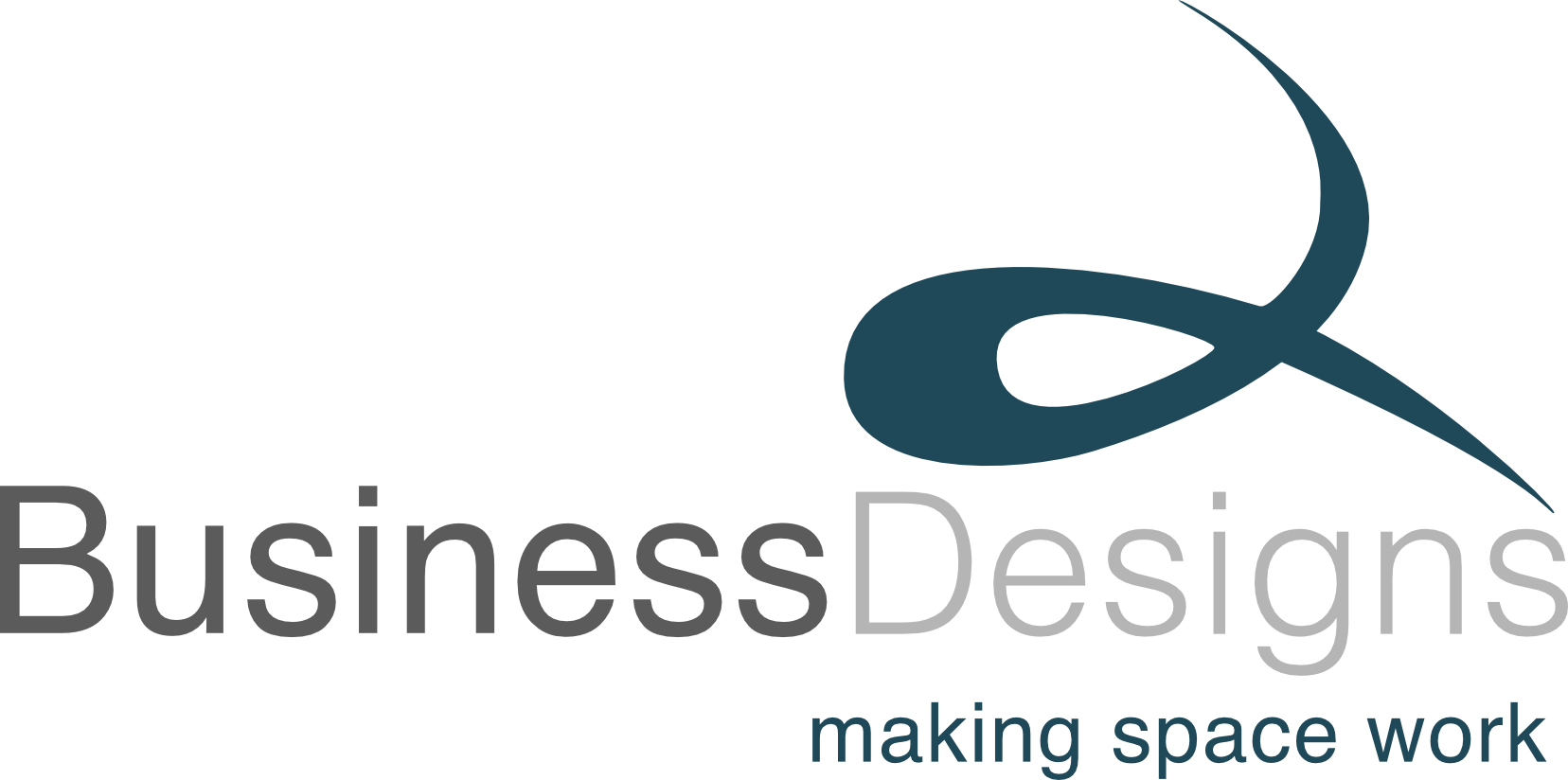The use of a professional office design company will always yield the best results but sometimes, if your budget won’t stretch to it, there are lots of things you can do yourself to make the most of the space you have available.
Lighting
An average lighting level of 500 lux is recommended for VDU operatives. HSE recommends an average level 200 lux minimum and no less than 100 luxe.
Avoid naked fluorescents at all costs. This type of light is hard on the eyes and can create glare on a PC Monitor, causing headaches, migraines and loss of productivity. In areas where PC’s are used, use LG3 or similar fittings as these utilise reflective light and minimise glare.
Use spotlights to highlight signage and features throughout the office. Halo spot lights work well in corridors and break out areas.
Remember, in order to satisfy Building Regulations requirements, in any areas over 60 Square Metres, you’ll need to install emergency lighting in any means of escape.
Flooring
Use different floor finishes and textures to create areas within your space. A simple carpet border detail can create a walkway that not only looks great but is also practical as a more durable floor finish can be specified in the high traffic areas. Changes in floor heights can also add impact, though care would need to be exercised with regard to the Equalities Act 2010. Consider Polyflor XL or similar for breakout areas and Polyflor Finesse EC Anti-Static flooring for Comms Rooms. Amtico and Karndean vinyl flooring are excellent products for receptions and break out areas.
Space Requirements
Allow 170 to 200 usable square feet per person, though this can vary depending on the type of organisation and any additional requirements you may have. For a more detailed analysis, a professional space planner should be engaged.
The following standards can be used to help estimate the amount of usable space required for your business:
- Typical Managing Director: 325 Sq Ft
- Typical Manager or Executive’s Office: 150 sq.
Open Space
- Administrator: 70 to 100 sq. ft.
- Meeting Rooms: 27 sq. ft. per person
- Reception Area: 175 sq. ft.
- Receptionist and 3 co-workers: 300 sq. ft.
- Receptionist and 7 co-workers: Break Out 15 sq. ft. per person, not including Teapoint
- Corridors: 20% of the utilisable space.
Blinds
Blinds can be very useful in minimising glare and ensuring maintained employee productivity. Both venetian and vertical blinds are effective, however if the sun is particularly strong, consider the use of black out fabric.
Comms Room
Generally, there is no right place to locate a Comms Room but dark, windowless areas often in the centre of the office space are the better option. Not only are these areas a little more secure from prying eyes, they are less subject to solar heat gain and the resultant additional cooling that may be required.
The Equalities Act 2010
All designs need to ensure that disabled people are catered for. For detailed advice on this, we recommend you consult a professional design company.
Furniture
Ensure you have a minimum circulation space to all regularly accessed parts of the office of 800mm minimum. Whilst height adjustable desking is not compulsory in the UK, it is useful in allowing the operator to tailor their working environment to their individual needs. For similar reasons, chairs should have as much adjustment as possible and as a minimum, gas lift, back rest rake and height adjustment.
Further Ideas
High ceilings will make your environment feel more spacious and will assist in the dissipation of sound. The lower the ceiling the more compressed you will feel and the more likely sound levels between workers will be an issue. Sound issues can be minimised by clever use of specialist insulation and acoustic panels and ceilings.
Consider colour schemes utilising pale blues and greens in small areas to make them feel more spacious and purples and deep reds in larger areas, to make them feel smaller.
For more details of our design service, call us on 0800 0197309.
